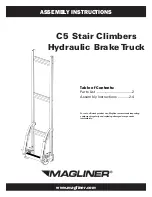
Navistar Electrical Systems CV
Integration Guide
Page 60 of 84
Revision Date: 9/12/2019
8.5. Radio Wiring and Connection Locations
Connecting radio power on Navistar vehicles is model dependent. The
installer must decide which one of the following four methods will be
appropriate.
Connect the positive and negative leads directly to the battery
terminals (illustrated in this guideline).
Connect the positive lead to the auxiliary power terminal (located at the
under-hood fuse center or identified by a red plastic cover in the under-
hood area) and connect the negative lead directly to the negative
battery terminal.
Connect the positive lead to the auxiliary power terminal and connect
the negative lead to the battery body connection point (identified by a
short #10 AWG or larger wire running from the negative battery
terminal to the body of the vehicle).
Connect the positive and negative leads to the Special Equipment
Option (SEO) wiring provided for this purpose.
If connections are made directly to the battery terminals, the Navistar-
approved methods of connecting auxiliary wiring include the adapter
package illustrated in Figure 2, NAPA-Belden replacement battery bolts,
P/N
728198, or drilling and tapping the hex end of the original battery bolts
10-32 X 3/8
” deep. Note that it is re
commended that a fuse be placed in
the transceiver negative lead to prevent possible transceiver damage in
the event the battery-to-engine block ground lead is inadvertently
disconnected.
For ONE-PIECE TRANSCEIVERS where ignition switch control is desired,
and no SEO wiring exists, a 12volt power contactor must be installed in
the transceiver positive lead. The contactor should be located near a
proper 12volt feed. The coil of the contactor should be connected through
an appropriate in-line fuse to an available accessory circuit or ignition
circuit not powered during cranking. The contactor coil must return to a
proper negative point. The detailed view in Figure 1B illustrates direct
connection to the vehicle battery.
Any negative lead from a handset or control unit must return to a proper
negative connection point. It is preferable that the positive lead for a
handset or control unit be connected directly to a proper positive feed. If
ignition switch control is desired, the handset or control unit positive lead
may be connected through an appropriate in-line fuse to an available
accessory circuit or ignition circuit not powered during cranking. It is
recommended that the handset or control unit positive and negative leads
be appropriately fused separately from the transceiver positive and
negative leads.
If multiple transceivers or receivers are to be installed in the vehicle,
power leads to the trunk or under dash should be connected to covered,
insulated terminal strips. All transceivers or receivers may then have their
















































